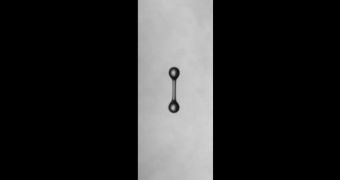Investigators at the University of Cambridge have determined in a new investigation that a liquid filament will not break apart into smaller droplets when condensed along its length. Rather, it will coalesce into a single, larger droplet. Experts have been trying to figure out which scenario was valid for years.
Determining this proved to be more complex than first believed. Experts from the Department of Engineering and the Institute for Manufacturing, both on Cambridge, had to work together for a long time before they could finally provide an answer.
Engineers working in the printing industry have been trying to figure out how condensation occurs at the scale of a single liquid filament for a long time. This is apparently important for a host of practical applications, including some related to standard printers and associated technologies.
Details of the new study were published in the latest issue of the esteemed journal Physical Review Letters. According to the paper, this research may be useful for improving ink-jet printing technologies, paint-spraying processes, as well as the methods through which drugs are currently distributed.
“For the first time in an experimental and quantitative way, the ultimate behavior of a filament under nothing but the action of viscous and surface tension forces has been explored,” says the first author of the PRL paper, Dr. Alfonso Arturo Castrejon Pita.
He explains that the printing industry is currently faced with the need to develop advanced printheads. These devices need to be able to create uniform-sized droplets of liquid that have the same surface tension, viscosity, and similar properties.
Professor Ian Hutchings, who led the Cambridge team, used ultra-fast imaging techniques on a test printhead, in order to determine how various levels of viscosity influenced the behavior of filaments.
“Our regime diagram can predict whether or not a certain liquid can be broken into useful droplets; it is, in simple words, a rule of thumb to determine whether a liquid can be used to produce a droplet or not,” the researcher explains.
The team says that the work they conducted could find applications beyond science and technology. The research could potentially explain how rain splashes on the pavement, how droplets drip from broken faucets, how honey spreads on toast, and so on.

 14 DAY TRIAL //
14 DAY TRIAL //